Read More About the Historical Jesus
The following book reviews first appeared in my now-defunct website, “The Jesus Archive.” I republish them here for the benefit of readers who take an interest in the scholarly underpinnings of my novel, “The Mystery of the Empty Tomb.” — JAB
Jesus the Healer: Possession, Trance and the Origins of Christianity
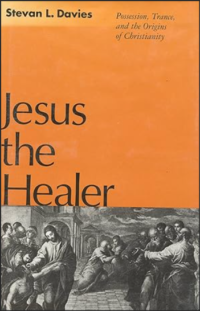
Stevan L. Davies; Continuum; New York; 1995.
by James A. Bacon
After 200 years of scholarship, the quest for the historical Jesus seemingly has led us nowhere. Thousands of monographs have scrutinized Jesus’ words in every conceivable social, political and symbolic context, yet the academic community is nowhere near consensus on who Jesus was or what he said. Far from coalescing in agreement, the scholarly movement is schisming with more competing theories about the historical Jesus than ever before — creating more diverse schools of thought than 2nd century Gnosticism! Jesus as counter-cultural wisdom sage. Jesus as peasant Jewish Cynic. Jesus as Pharasaic rabbi. Jesus as anti-patriarchal communalist. Jesus as eschatological preacher. Continue reading.
The Historical Jesus: The Life of a Mediterranean Jewish Peasant

The Birth of Christianity: Discovering What Happened in the Years Immediately After the Execution of Jesus.
by James A. Bacon
If you’d like to read about “what happened” to Peter, John and the other disciples after Jesus’ crucifixion, look elsewhere. The Birth of Christianity: Discovering What Happened in the Years Immediately After the Execution of Jesus does not reconstruct the acts of the apostles. Rather, John Dominic Crossan asks how Jesus’ followers transmitted his sayings, orally and in writing, before, as he supposes, Paul and the Gospel authors hijacked the memory of Jesus and transformed it beyond recognition. Continue reading.
Jesus: A Revolutionary Biography
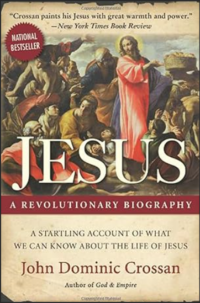
John Dominic Crossan. HarperCollins. New York, NY; 1994
by James A. Bacon
For students new to the study of the historical “Jesus, Jesus: A Revolutionary Biography” serves as a useful primer for the Jesus-as-social-critic school. Dominic Crossan is one of the best known New Testament scholars in the profession today and probably the most widely quoted — by the popular press if not necessarily by fellow academics. His dense and forbidding scholarly tomes, such as “The Cross that Spoke” and “The Historical Jesus,” drag the student through hundreds of pages of arcane social theory and line-by-line textual criticism. But “Jesus: A Revolutionary Biography” packs a career’s worth of research and insight into a single, slender volume.
Surpassing Wonder: The Invention of the Bible and the Talmuds

Donald Harman Akenson; Harcourt Brace and Company; New York and London; 1998.
by James A. Bacon
In Surpassing Wonder: The Invention of the Bible and the Talmuds, Donald Akenson chronicles the development of the Judeo-Christian literary heritage: the Tanakh (known as the Old Testament to Christians), the Jewish apocryphal literature, the New Testament, the Mishnah and the Talmuds. Recapitulating 1,000 years of literary history, Akenson does not retell Bible stories or even appraise their historical context and authenticity. Instead, he recounts how these great works of religious literature were written and, in the process, illuminates what he calls the “grammar of invention” — the patterns by which new theological ideas emerged under the mantle of ancient authority. Continue reading.
The Open Tomb: A New Approach, Mark’s Passover Haggadah (Ca. 72 C.E)

Karel Hanhart; The Liturgical Press; Collegeville, Minnesota; 1995
by James A. Bacon
Karel Hanhart, a pastor and biblical scholar, lived as a teenager through the Nazi occupation of the Netherlands. He experienced first-hand how the Dutch forged a cryptic tongue to communicate without being understood by the Germans. Subject people, he observes, often speak in allegorical code “for protection against foreign ears.” Such was the case, he theorizes, among the Jews under imperial Roman rule, especially after the sack of Jerusalem in 70 A.D. Continue reading.
Bandits, Prophets & Messiahs
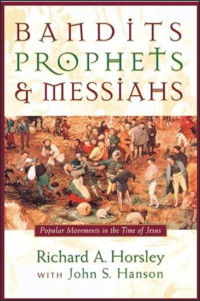
Richard A. Horsley, with John S. Hanson. Trinity Press International, Harrisburg, Pennsylvania; 1999. Originally published in 1985
by James A. Bacon
When first published in 1985, Bandits, Prophets & Messiahs acted as a much-needed antidote to a debilitating trend in New Testament scholarship. Simple-minded interpretations of Jesus and his social milieu had come into vogue with the liberation theology of the 1960s and 1970s, and an equally simplistic academic counterrevolution had set in. Leftist scholars were interpreting the Great Revolt of 66 A.D. as a classic war of liberation against the Romans and their Jewish collaborators. They construed any sign of resistance to imperial rule as part of a broad-based “Zealot” movement. Carrying this line of thinking to extremes, some even argued that Jesus himself was a Zealot executed by the Romans for armed insurrection. In reaction, conservative scholars cited abundant evidence to portray Jesus as an other-worldly pacifist. In the polarized intellectual climate of the time, there seemed to be only two ways of understanding Jesus: He was either a militant revolutionary or a conscientious objector. Continue reading.
The Social Gospel of Jesus: The Kingdom of God in Mediterranean Perspective
Bruce J. Malina; Fortress Press; 2001
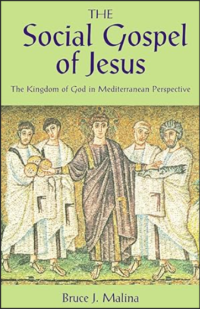
by James A. Bacon
Of the few indisputable historical facts about Jesus, one is that he preached about “the kingdom of God.” The meaning of the phrase, which he illuminated by means of parable and simile, was clear, presumably, to 1st-century Galileans but it has engendered endless debate among 21st-century scholars. In his new book, The Social Gospel of Jesus, Bruce J. Malina sets two main goals for himself: to elucidate the social conditions which the kingdom of God was meant to address, and to explicate what Jesus and his contemporaries understood by the term. Continue reading.
Jew & Gentile in the Ancient World: Attitudes and Interactions from Alexander to Justinian
Louis H. Feldman, Princeton University Press; 1993

by James A. Bacon
Louis Feldman commences his book with a simple question: If the Jews were as widely hated in antiquity as many scholars have insisted, how did they win over so many sympathizers and proselytes? The answer, he suggests, is that they weren’t as despised as is commonly held. Rejecting what he terms the “lachrymose conception of Jewish history” as a narration of unending suffering, Feldman maintains that the Jews in the ancient world were strong, self-confident and growing in numbers and influence. Continue reading.
A Marginal Jew, Vol. 3: Companions and Competitors
John P. Meier; Doubleday; 2001
by James A. Bacon
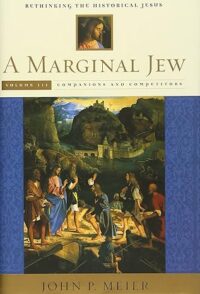
John P. Meier, a Catholic priest and professor of New Testament at Notre Dame University, continues his magnum opus, A Marginal Jew, with the publication of the third volume, Companions and Competitors.
In the first volume, Meier laid out a rigorous methodology for identifying the genuine words and deeds of the historic Jesus. His five criteria of authenticity, widely employed by New Testament scholars today, were useful for stripping away the legendary accretions of the early church. Meier devoted his second volume to establishing what he believed to be the core historical truth of Jesus: that he was an eschatological prophet who, after a sojourn with John the Baptist, patterned his ministry on that of the miracle-working prophet Elijah. Continue reading.
Land and Economy in Ancient Palestine
Jack Pastor; Routledge; New York and London; 1997

by James A. Bacon
Students of Second Temple Judaism have long been struck by the extreme stratification of Palestinian society. Observers of the Herodian era, in particular, have remarked upon the plethora of taxes, tithes, custom duties, rents, debt and other obligations that weighed upon the poor. Invariably, scholars have attempted to explain the spasms of unrest under Herodian and Roman rule by pointing to deteriorating economic conditions. The chain of causation typically goes something like this: As the rulers increased the burdens upon their subjects, independent landowners borrowed money to meet their obligations. Debt led to foreclosure, swelling the ranks of the dispossessed. Landless tenants and day laborers swelled the ranks of social bandits, Zealots and anyone else bent upon challenging the established order.
This mantra is repeated so frequently that Jack Pastor’s work, Land and Economy in Ancient Palestine, comes as a necessary corrective. Continue reading.
From Jesus to Christ: The Origins of the New Testament Images of Jesus
Paula Fredriksen; Yale University Press; 1988
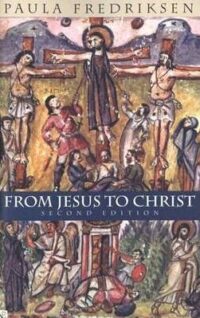
by James A. Bacon
The quest for the historical Jesus leans heavily upon the writings of five men: Paul, Mark, Matthew, Luke and John. Though drawing upon many of the same early Christian traditions, each author presents a distinct image of Jesus. Indeed, these portraits are so startlingly different that the aims and biases of the authors must be taken into account by anyone employing evidence from the New Testament to limn the life of Jesus.
In From Jesus to Christ: The Origins of the New Testament Images of Jesus, Paula Fredriksen illuminates the five portraits of Jesus. Continue reading.
James the Brother of Jesus: The Key to Unlocking the Secrets of Early Christianity and the Dead Sea Scrolls
Robert Eisenman; Viking Penguin; New York, NY; 1997

by James A. Bacon
James, the brother of Jesus, has never captured the imagination of scholars studying the origins of Christianity. It is commonly acknowledged that he succeeded Jesus as first “bishop” of the Jerusalem church, and that he contested with Paul the Apostle for leadership of the early Christian community. Martyred at the instigation of the High Priest Annas, he also is one of only three Christian icons – the others being John the Baptist and Jesus himself – deemed significant enough to warrant mention in the chronicles of Flavius Josephus. But his activities, notable though they were, have stimulated only a fraction of the scholarly interest of, say, Paul, John the Baptist or any of the Gospel authors.
If we are to believe Robert Eisenman, however, James may be the most under appreciated personage in the study of both the New Testament and Second Temple Judaism – and the key to understanding early Christianity. Continue reading.
Critiquing the Quest
Historical Jesus research serves right-wing political interests, says Elisabeth Schussler Fiorenza.
by James A. Bacon
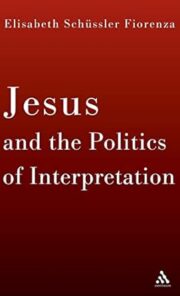
Poor Dominic Crossan, he tries so hard to be one of the good guys. His Jesus, a non-violent revolutionary, preaches the liberation of peasants from their landlords, women from their masters and Jews from the Romans. His God, a deity that abhors discrimination and oppression, sides with the dispossessed. His 1st-century Rome is an empire built around systemic exploitation of the powerless. And the spread of a commercial economy under Roman dominion — the capitalism of its time — is a malignant force that corrodes traditional ways of life and drives the poor into deeper, unremitting penury. For Crossan, reconstructing the historical Jesus amounts to uncovering the voices of resistance to the forces of oppression.
For Elisabeth Schussler Fiorenza the so-called Third Quest for the historical Jesus, which Crossan has done so much to popularize, is inherently flawed. Continued reading.